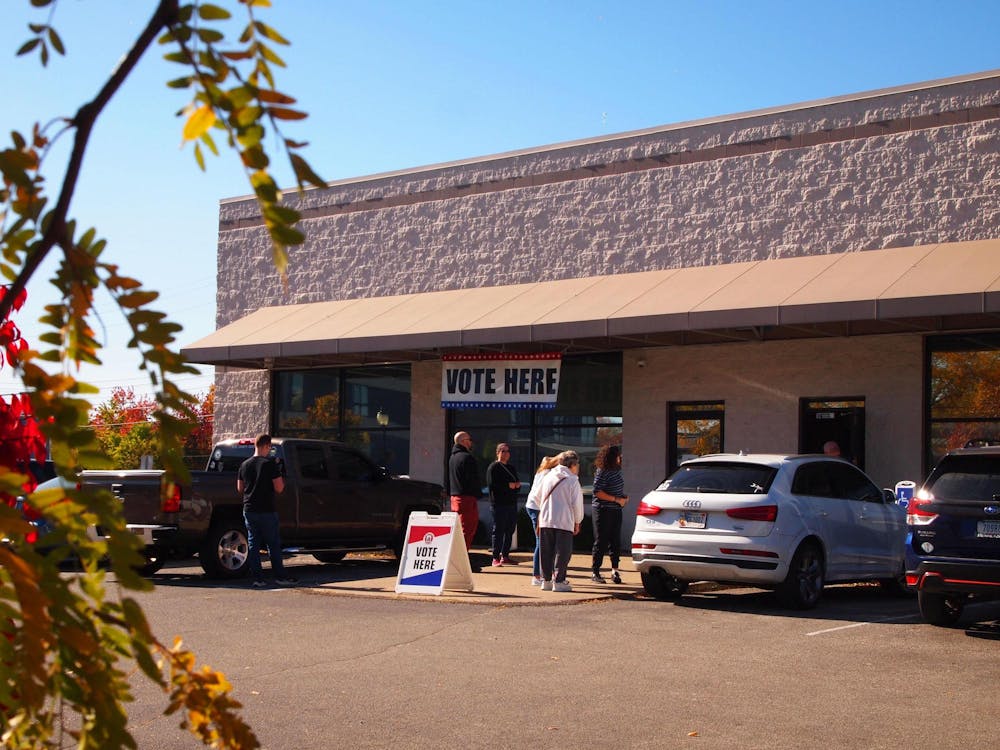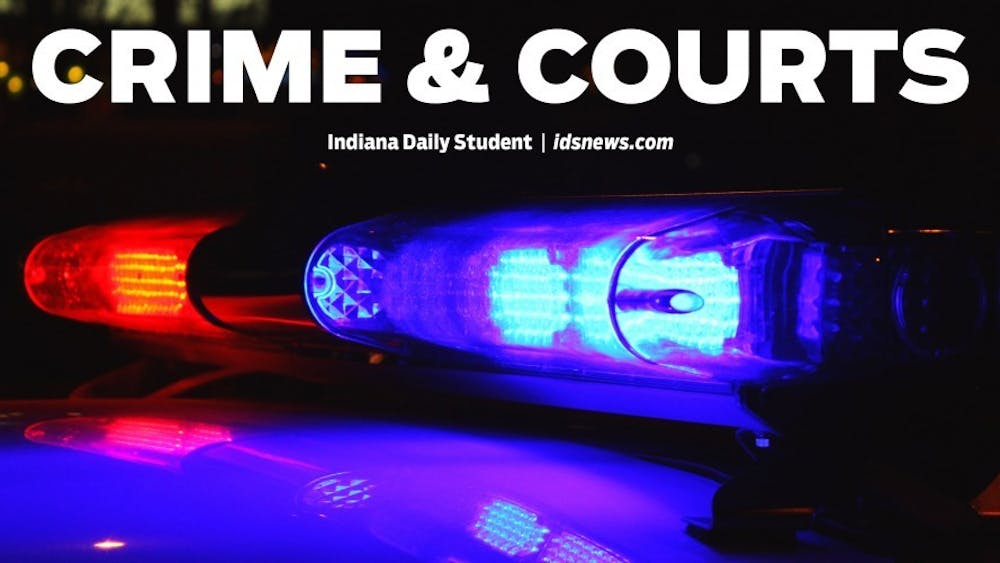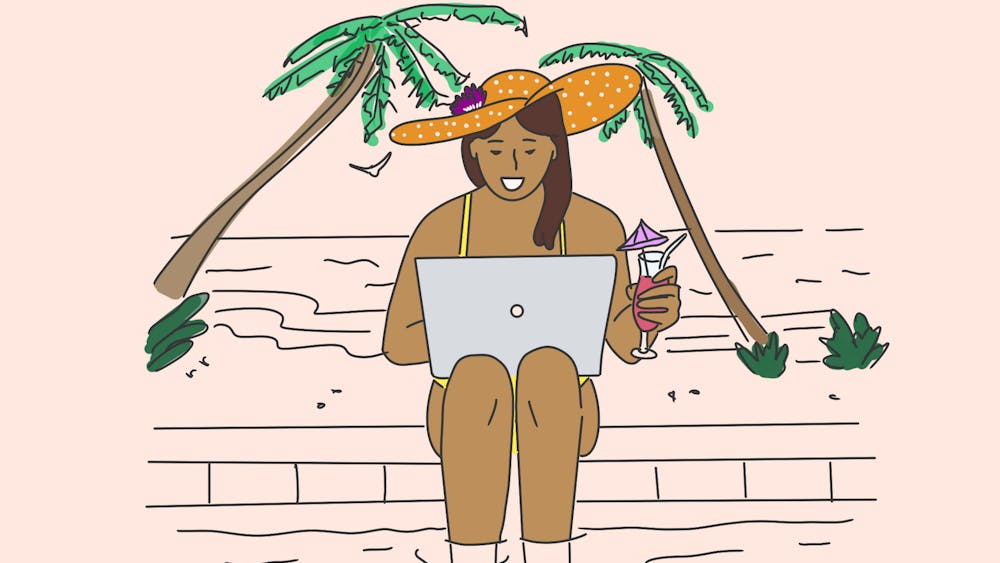Josh Montagne was eager to vote, so much so that he went to the polls Oct. 8, the first day of early voting in Indiana. He’s been organizing for the Monroe County Democrats for more than a year now.
Poll workers there told him he needed to prove his residency because the computer flagged his profile over what was eventually determined to be a computer glitch.
Montagne used his CrimsonCard to vote, a valid form of identification. But the glitch caused poll workers to ask for an address, which the card doesn’t include. When Montagne said he didn’t have a way to prove residency, he was turned away, rather than given a provisional ballot — ballots given to voters that aren’t counted until they can supply verification.
Ralf Shaw, spokesperson for the League of Women Voters of Bloomington-Monroe County, said Montagne’s experience was atypical for Monroe County, which usually has less obstacles to voting than the rest of the state.
As of publication, 29,478 people have voted early in Monroe County, surpassing both 2016 and 2020’s levels.
Ralf said much of Monroe County’s success in voting is due to its clerk, Nicole Browne, who she said has put enormous amounts of effort into getting residents to vote. But she said that effort hasn’t been replicated throughout Indiana.
“When I've talked to people in other counties, they don't necessarily have that kind of infrastructure and support and commitment,” Ralf said.
She said that’s taken a toll on Indiana’s voter turnout overall, and it shows. Indiana’s turnout in the 2020 election was 61% — the ninth lowest in the country. Even other comparably red Midwestern states like Missouri — at 65.5% — had a higher turnout. The national turnout was about 66%.
The Indiana Bar Foundation Civic Index even ranked Indiana 50th out of 51 in voter turnout, out of all 50 states and Washington D.C.
That means Indiana is unique even among states with strict requirements. A number of other factors have likely melded together to bring Indiana to the bottom of turnout rankings, Ralf said, including gerrymandering among state legislature districts and Indiana’s ruby red voting history.
The Institute for Responsive Government gave Indiana a “C” on its 2024 election policy progress report. Two pieces of legislation passed in 2023 factored into that score.
Helping its score was House Enrolled Act 1334, which passed last year. That law requires absentee voters go through additional verification via identification, such as a driver’s license number, Social Security number or voter ID number. It also established a process for counties to correct defective absentee ballot applications.
Senate Enrolled Act 106 hurt Indiana’s score. That law stopped local election jurisdictions from changing how they conduct elections outside of what is already allowed by state law.
The League of Women Voters of Indiana’s president, Linda Hanson, said strict requirements on voting in Indiana have made turnout and voter apathy worse.
Indiana’s voter registration window closed Oct. 7, while other states allow voters to register up to Election Day. Other requirements, including needing photo ID to vote in person and proof of residency for first-time voters, are also stricter than many other states.
Otherwise, Hanson said attacks on voters from state officials have made many feel intimidated or that their votes won’t matter. She brought up Indiana Secretary of State Diego Morales’ decision to review more than 500,000 voters’ citizenship status — a decision made 10 days after registration closed.
“Hospitality in Indiana — you know, it's supposed to be the Hoosier State, where everyone’s welcomed,” Hanson said. “No, that's clearly not the message they're sending.”
The League of Women Voters of Indiana is now tracking incidents in three counties — Lake, LaPorte and Cass — where election officials have asked for proof of citizenship, which is not yet a state requirement. That requirement, however, will be implemented next year.
Hanson said intimidation has also extended to attacks on immigrant communities, notably Republican candidate for lieutenant governor Micah Beckwith’s remarks on Haitian immigrants residing legally in Logansport.
Beckwith said, in an Oct. 17 interview on a Fort Wayne radio station, that tens of thousands of Haitian immigrants had settled in the city of 18,000, without providing evidence.
“We do not want multiculturalism, we want assimilation into the American way of life, and if you will not do that, then you do not belong here, so we are going to find you and we are going to remove you,” Beckwith said in the interview, referencing migrants allowed in the country legally.
That sort of rhetoric, Hanson said, is hurting turnout among immigrant communities and heightening the risk of intimidation on Election Day.
“That's creating security problems,” Hanson said.
Hanson and Ralf both said they were concerned about voter intimidation happening on election day itself. The League of Women Voters is working to combat it, but they said that anyone facing difficulties on election day should call the Chicago Lawyers’ Committee for Civil Rights’ toll-free number at 866-OUR-VOTE (866-687-8683). The program services both Indiana and Illinois.






